Art World
Here Are the Absolute Best Artworks We Saw Around the World in 2017
From Anne Imhof's remarkable pavilion in Venice to Chris Burden's delightful dirigible in Basel, here's the art we'll remember most.
BEST ART OF 2017
ART OF 2017
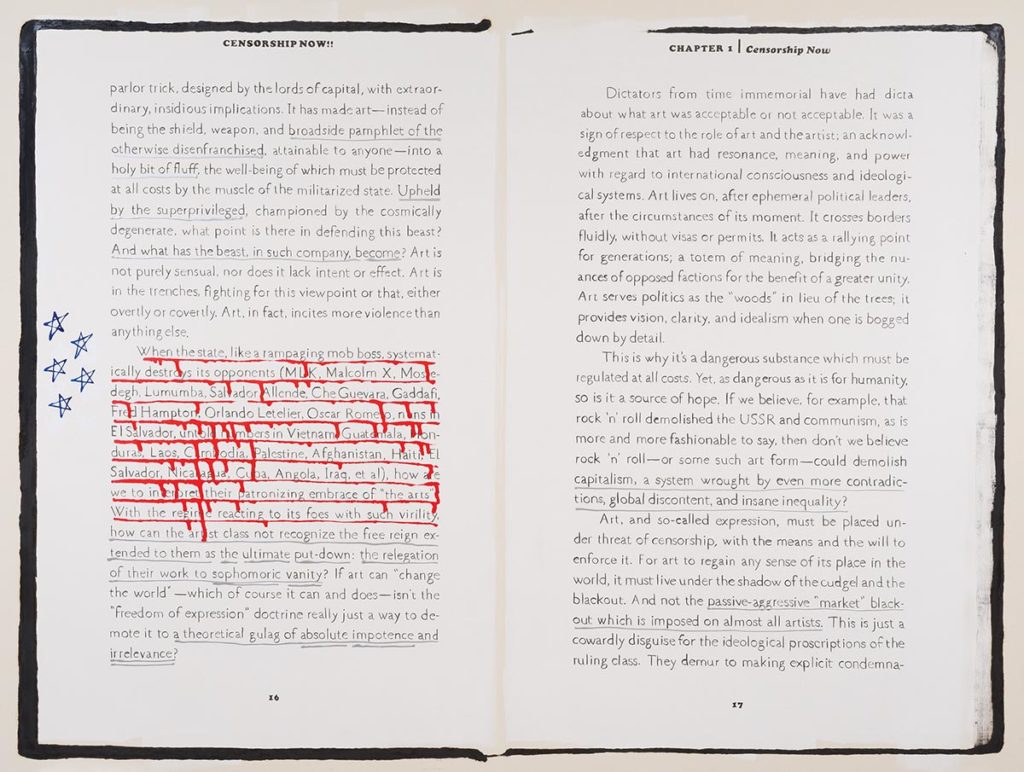
Frances Stark’s Censorship Now (2017). Courtesy of the artist and Gavin Brown’s enterprise, New York/Rome.
Frances Stark’s “Censorship Now” series at the 2017 Whitney Biennial
Following Trump’s election, everyone pretty much knew 2017 was going to be an angry year, but what remains stunning is how much of that anger turned inward, setting off rounds of extreme vetting and denunciation within the ranks of the left-leaning cultural community itself. It is to the accidental but nonetheless great credit of the Whitney Biennial, the best -ennial I saw all year, that it encapsulated this tendency in an almost uncanny way with the inclusion of two works. The first, of course, was Dana Schutz’s painting of the remains of Emmett Till, which sparked a blazing controversy over whether the white Schutz had the right to portray the grievous power of Till’s black body, and whether the work should be removed from the show (as the curators refused to do) or even destroyed.
The other work, Frances Stark’s cycle of paintings representing Ian F. Svenonious’s screed Censorship Now!, advanced a certain counterargument in the form of a full-throated—if “Swiftian”—endorsement of a campaign of populist, anti-capitalist censorship of the arts, entertainment, politics, and technology. On its face, the argument has a lot of appeal! A good portion of “music on the radio” can be said to “promote class war and celebrate idiocy, sociopathy, immoral wealth accumulation, discrimination, and stultifying social roles”; many video games might well be “designed to cause violent, masturbatory passivity and to create absolutely obedient death machines”; too much culture could be seen as “the thrown voice of Wall Street,” guided by the totalitarian hand of the market.
The paintings faithfully echo Svenonious’s extremist solution: “We need a guerrilla censorship that uses all the cruel tools of a revolution. Pain, terror, absolute mercilessness…. Censorship, termination, eradication, and liquidation. Censorship until reeducation!” A well-intentioned desire for censorship, of course, was behind the calls to remove Schutz’s portrait, to destroy Sam Durant’s gallows sculpture (for a similar charge of cultural appropriation), and to take down the Met’s Balthus painting.
One reason so many people find solace in art is that it celebrates the non-binary, the unorthodox, and the alternative—the umbrageous places where truth and fiction, right and wrong, blend in a way that is recognizably true to life. But what if its all-encompassing embrace is a kind of orthodoxy, and censorship—or other forms of reactive conservatism—is a suppressed alternative? This question, implacable yet pressing (and not going away anytime soon), is the electricity that runs through Stark’s paintings cycle, making it the best work I saw this year.
—Andrew Goldstein
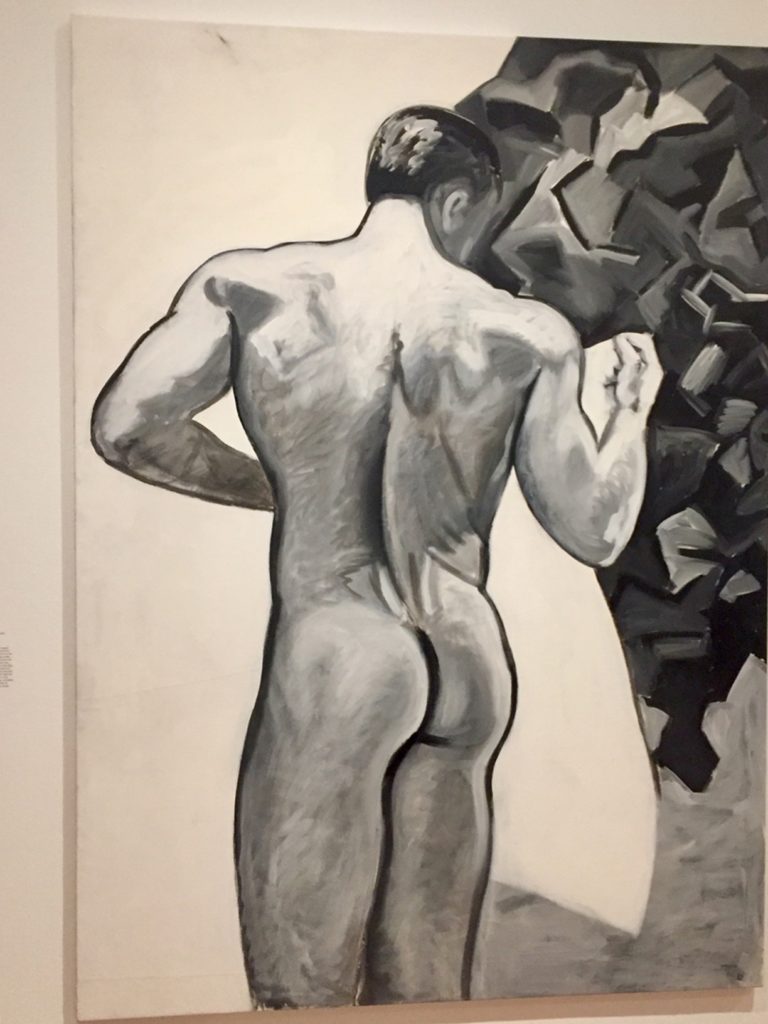
Mundo Meza’s Untitled (Male nude) (c. 1983). Photo: Ben Davis.
Mundo Meza’s Untitled (Male Nude) (c. 1983) at the Museum of Contemporary Art, Los Angeles
Pacific Standard Time offered a couple of shows that, for me, do what I think museums can do at their scholarly best: give you history that expands your idea of what art can do in the present. “Radical Women” told the storyof art-as-survival-strategy and personal redemption in a more sweeping way; “Axis Mundo: Queer Networks in Chicano L.A” was in its way less flashy but more rooted in uncovering a specific time and place. Teddy Sandoval, an artist who created his own great signature brand of painting centering on faceless male figures with prominent mustaches, is one great discovery from that show. Mundo Meza, a nearly forgotten painter whose name gave the show its title, is the other, with his black-and-white paintings standing out as magically both huge and intimate.
—Ben Davis
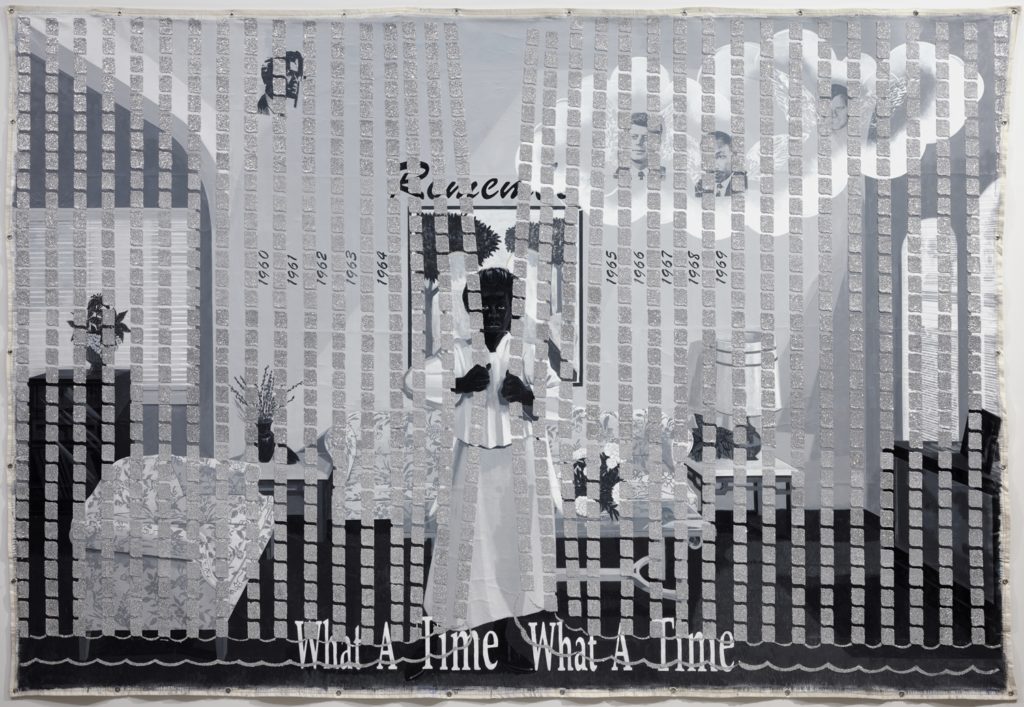
Kerry James Marshall’s Memento #5, (2003). Photo: Jamison Miller, courtesy of The Nelson-Atkins Museum of Art, © Kerry James Marshall.
Kerry James Marshall‘s Memento #5 (2003) at the Museum of Contemporary Art, Los Angeles
Although I often feel like I’m hemorrhaging interest in painting by the day, Kerry James Marshall’s work still feels indispensable to me—and never more than this year. Like all of my favorite work in Marshall’s tour-de-force retrospective “Mastry,” Memento #5‘s intellectual layers are exceeded by its emotional gravity. Here he mourns the tragedy of social and racial progress literally gunned down four times over, in the form of the four transformative figures pictured behind the silver curtains of this heavenly parlor: Malcolm X, Martin Luther King, JFK, and RFK. Rather than communicate his message through a labyrinth of metaphorical details, though, Marshall funnels it into a restrained set of signifiers that nearly anyone can recognize. It’s an elegy that, regrettably, feels both big and raw enough for 2017.
—Tim Schneider
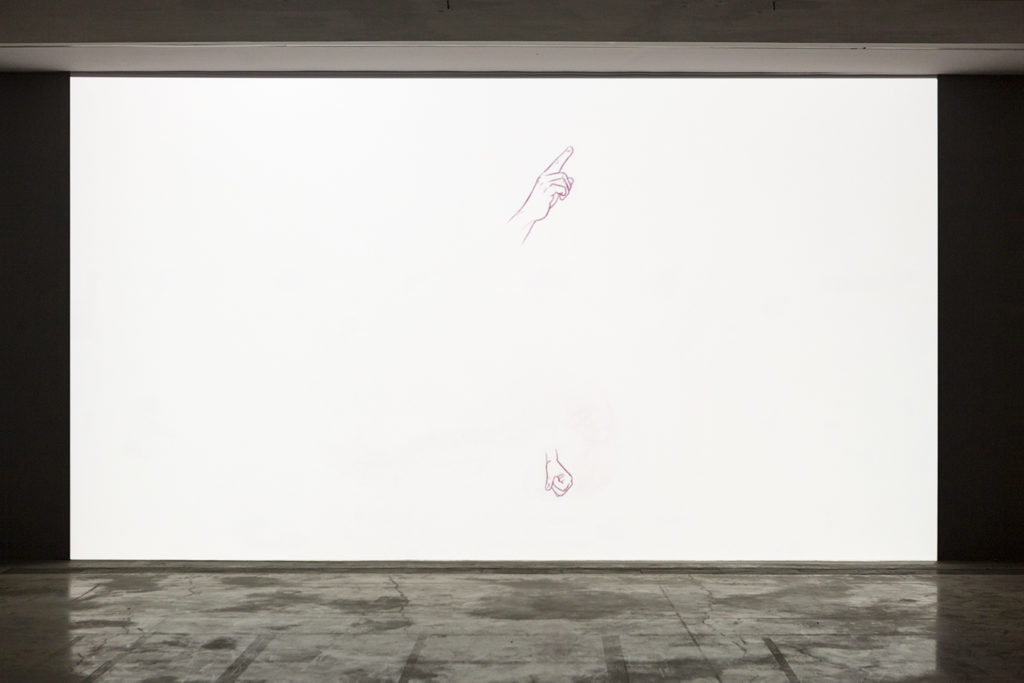
Carlos Garaicoa’s Abismo (2017). Photo: Renato Ghiazza, courtesy of Fondazione Merz.
Carlos Garaicoa’s Abismo (2017) at the Fondazione Merz, Turin
This video work was hidden downstairs at the end of Garaicoa’s solo show in Turin. The animation shows a pair of disembodied hands on a white background, apparently conducting a rendition of French composer Olivier Messiaen’s Quartet For the End of Time, which was written after the fall of France in 1940 while Messiaen was a prisoner of war at the Stalag VIII-A camp in Germany. But the stylized hand gestures animated by the Cuban artist are not actually conducting the musical score. Rather, they are taken from the animated gestures Hitler made while delivering speeches. It gets my vote for being the most affecting work I’d seen all year, probably for a combination of the beauty of the composition, the harrowing effect of the delayed realization that these delicate hands are actually conducting the “Final Solution,” and a rattling familiarity of the body language in the movements of some contemporary politicians.
—Naomi Rea
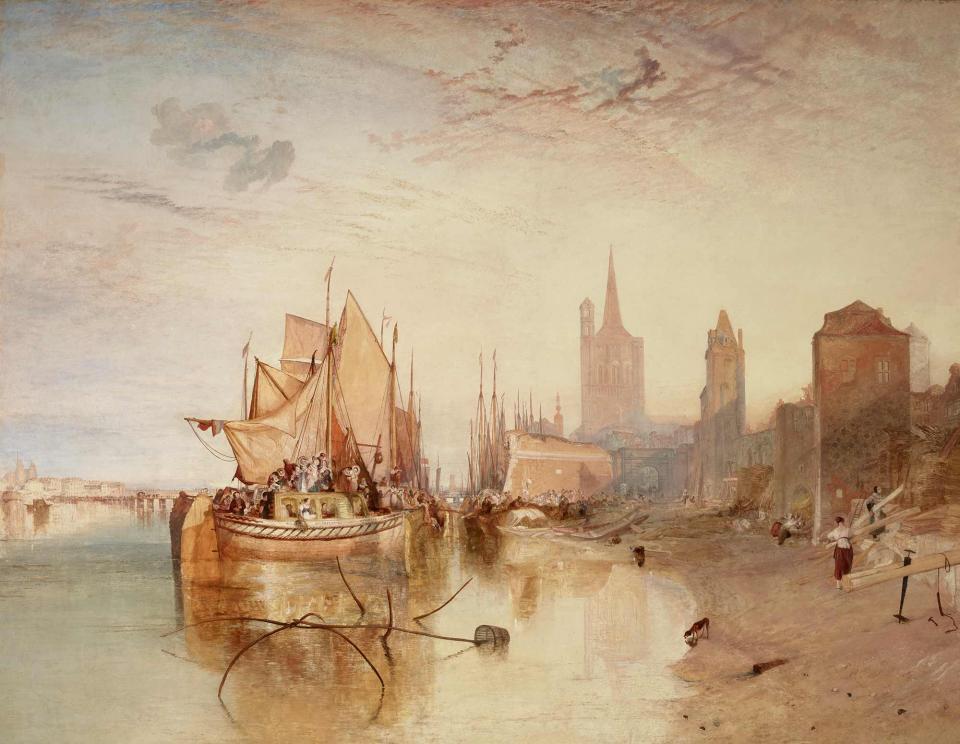
J.M.W. Turner’s Cologne: The Arrival of a Packet-Boat: Evening (exhibited 1826). The Frick Collection, New York; photo: Michael Bodycomb.
“Turner’s Modern and Ancient Ports: Passages through Time” at the Frick Collection
One of the most beautiful and inspiring shows I saw all year was “Turner’s Modern and Ancient Ports” at the Frick this past spring—one of my all-time favorite artists at one of my all-time favorite museums. The springboard for the show was a pair of monumental paintings already housed in the Frick collection—The Harbor of Dieppe (1825) and Cologne, The Arrival of a Packet-Boat: Evening (1826). Because of travel restrictions, the works have never been included in a show outside of the Frick. I love the fact that Turner, an avid traveler who was fascinated by light, landscapes, and local traditions, not only painted “modern” ports in England, France, and Germany but that he also created vibrant, ancient port scenes of a world he never saw, but was able to imagine vividly.
—Eileen Kinsella
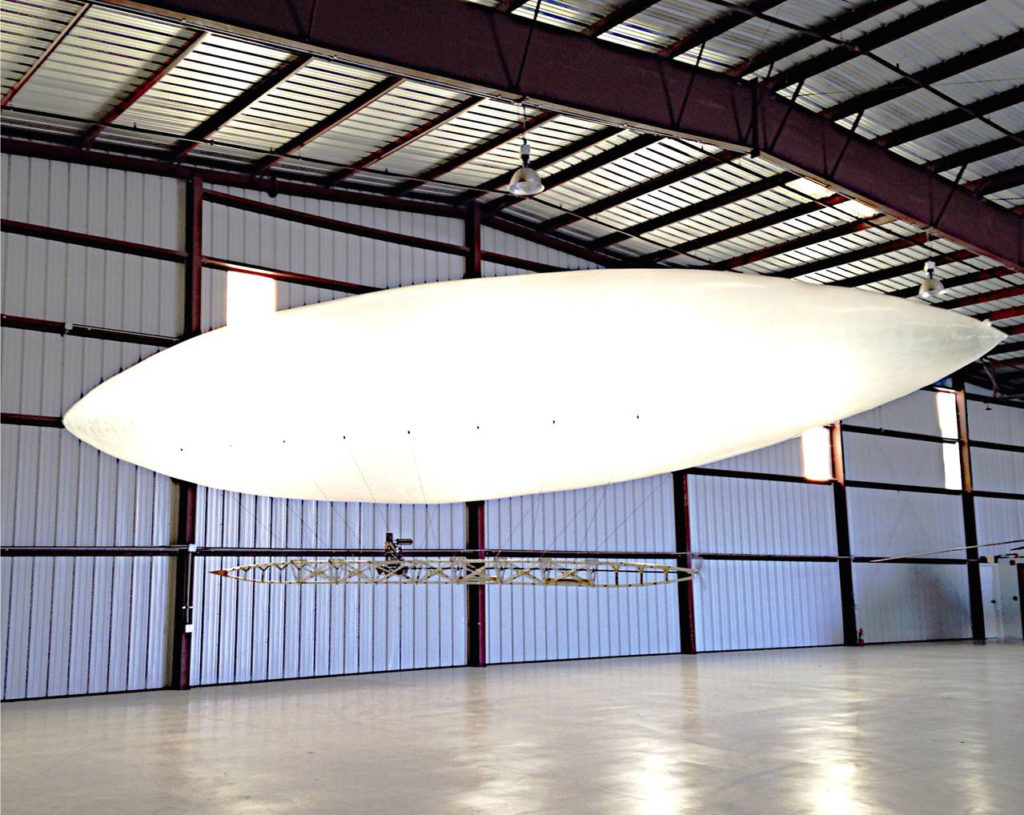
Chris Burden’s Ode to Santos Dumont (2015). © Chris Burden, photo by J. Searles.
Chris Burden’s Ode to Santos Dumont (2015) at Art Basel in Switzerland
Chris Burden’s airship-sculpture flying in a circle at Unlimited at Art Basel in June was a highlight of the Swiss fair. The late, great US artist’s final work, Ode to Santos Dumont made its inaugural public flight in 2015 at the Los Angeles County Museum of Art only five days after Burden’s death. It took to the air again courtesy of Gagosian and an expert ground crew. Burden rarely thought anything ever reached perfection, but this work came damn close. He was excited about its launch but only got to see test fights in a private hangar alongside the inventor John Biggs.
—Javier Pes
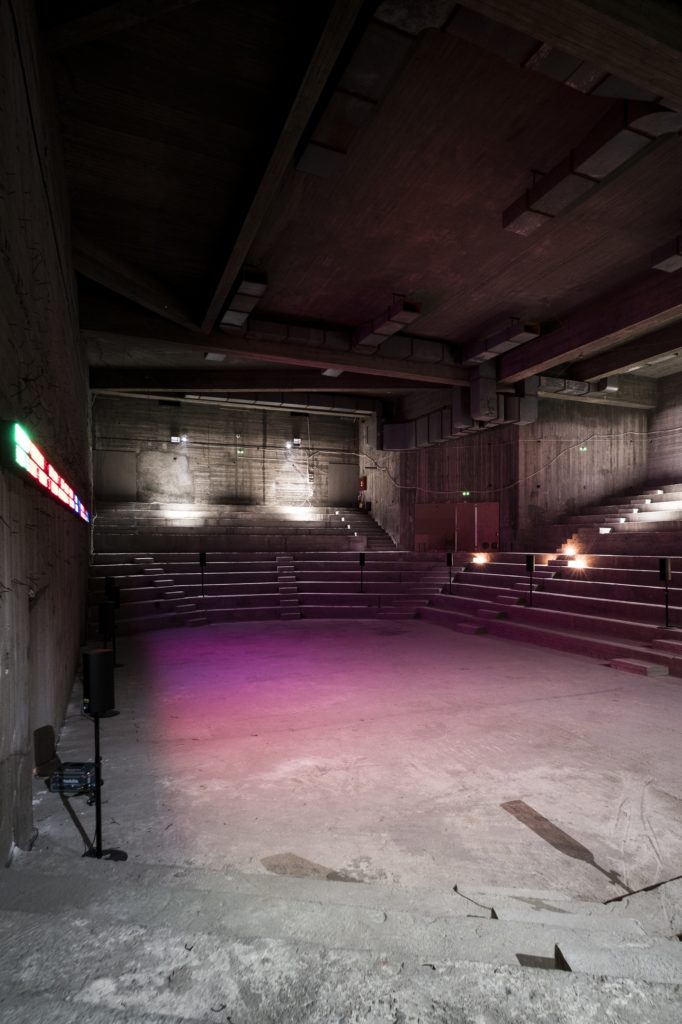
Emeka Ogboh’s The Way Earthly Things Are Going (2017). Installation view at Athens Conservatoire, documenta 14. Photo: Mathias Völzke.
Emeke Ogboh’s The Way Earthly Things are Going (2017) at documenta14 (Athens)
Within the confusion and awkwardness that pervaded documenta’s Athens edition, discovering the work of Emeke Ogboh behind an unassuming door was a saving grace. The Nigerian artist’s installation was given a lofty private setting within an indoor amphitheater at the city’s historic Conservatoire, which was empty save for speakers and a large LED ticker of scrolling stock market prices in real time. The layered voices of a Greek polyphonic choir emanated throughout the concrete room, which had a totalizing effect that was piercing and meditative, and then altogether unforgettable. Hearing this melodic foreign language, which evoked the spirit of the birthplace of Western civilization (now submerged in economic crisis), was sharply juxtaposed against the rising and falling prices of the world’s economy and natural resources. Associations on the economic crisis flipped, and suddenly an unknown language and culture transcended barriers to become deeply human and relatable while the main pillar of the West melted into a colorful stream of light, becoming alien and abstracted.
—Kate Brown
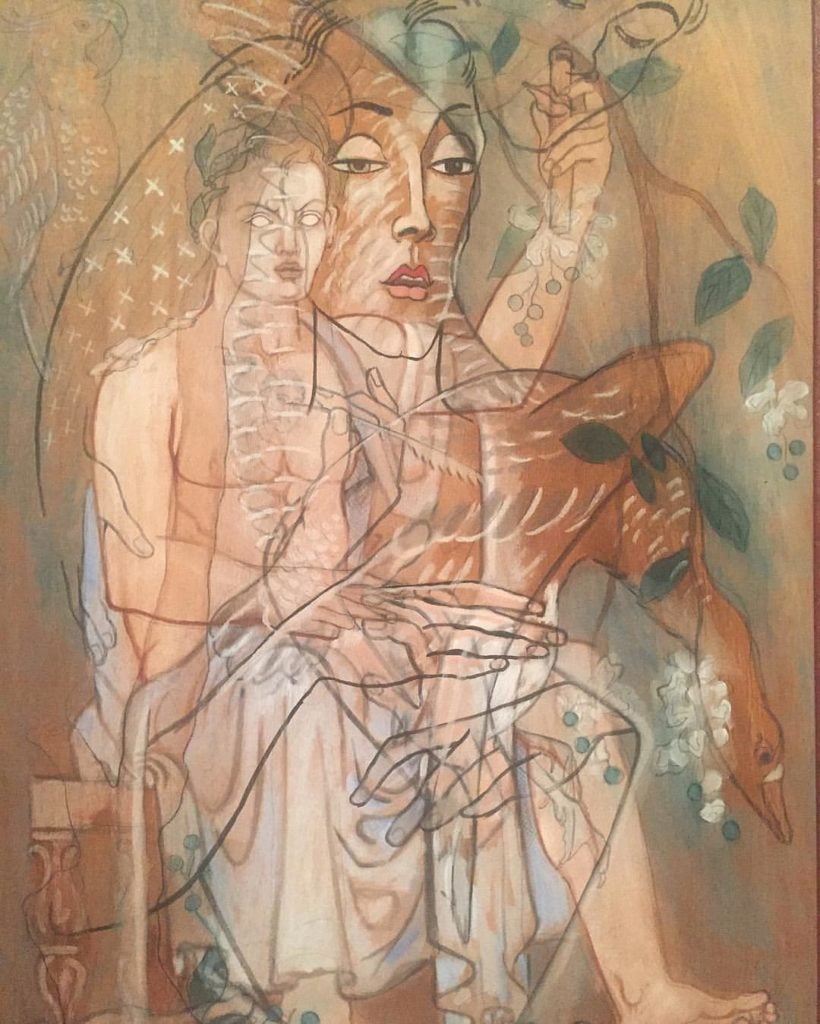
Francis Picabia’s Minos (1929). Collection Gian Enzo Sperone. Courtesy of Sperone Westwater, New York.
“Francis Picabia: Our Heads Are Round So Our Thoughts Can Change Direction” at the Museum of Modern Art
Going into “Our Heads Are Round,” I knew shamefully little about Francis Picabia. Every gallery in this survey was a revelation. Early Impressionist-style canvases gave way to Cubist-flavored works, and then the artist’s exploration of Dada; Picabia refused to limit himself to any one style.
The showstopper was the “Transparencies” series (1927–30), in which the artist achieved a multi-layered effect through the use of transparent colored glazes and varnishes, manipulating oil paint to appear almost like the glossy surface of a ceramic bowl. The subject matter, often drawn from mythology, adds to the uncanny sensation that the works are relics from a lost civilization, the image fading to reveal an erased history. Yet Picabia’s masterful composition blends these dueling images into one harmonious whole, so compelling that the viewer longs to continue staring at the dense interplay of line and color.
—Sarah Cascone
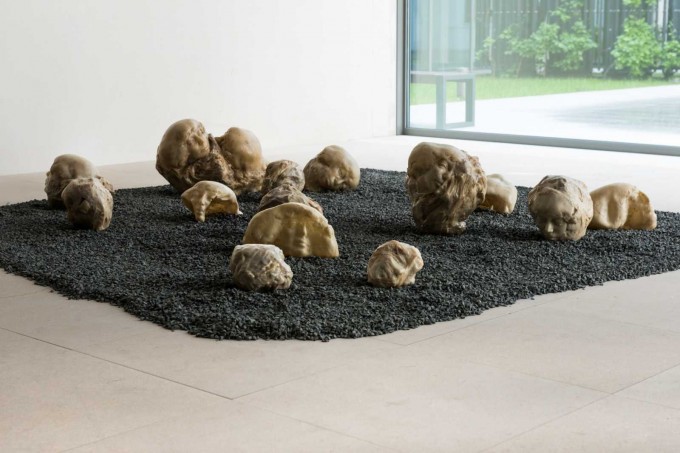
Alina Szapocznikow’s Tumours Personified (1971). Photo: © 2017 Artists Rights Society (ARS), New York / ADAGP, Paris. Courtesy of Zachęta – National Gallery of Art, Warsaw.
Alina Szapocznikow’s Tumours Personified (1971) at the Hepworth Wakefield
Despite the vast amount of new art I’ve seen this year across fairs, galleries and biennials, the most striking works I encountered were made almost five decades ago by the Polish artist Alina Szapocznikow, who’s currently the subject of an unmissable retrospective at the Hepworth Wakefield called “Human Landscapes.” Szapocznikow’s oeuvre is so consistently brilliant that it’s difficult to pick just one work, but I found one piece particularly affecting: the floor sculpture Tumors Personified (1971), in which a cluster of organic shapes in polyester resin bearing the face of the artist rest on a bed of gray pebbles, like a colony of tumors inexplicably marooned on a shingle beach. The artist created this work (and many more in similar themes) while battling the breast cancer that would kill her two years later, at just 47. Tumors Personified is not only a phenomenal, boundary-pushing sculpture on a formal level, it is also a reminder that best art can spring from biography without being narcissistic or overbearing.
—Lorena Munoz-Alonso
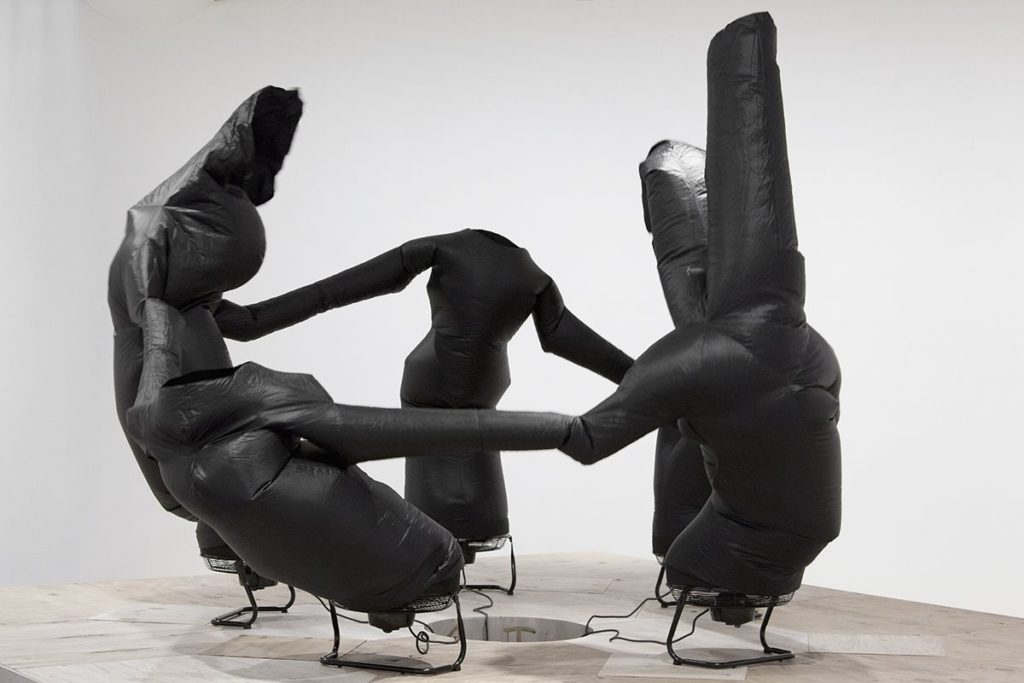
Paul Chan’s Pentasophia (or Le bonheur de vivre dans la catastrophe du monde occidental) (2016). Courtesy of the artist and Greene Naftali.
Paul Chan’s “Rhi Anima” at Greene Naftali
Strange, haunting, smart, and even funny, Paul Chan’s exhibition “Rhi Anima” stuck with me more than anything else this year.
—Taylor Dafoe
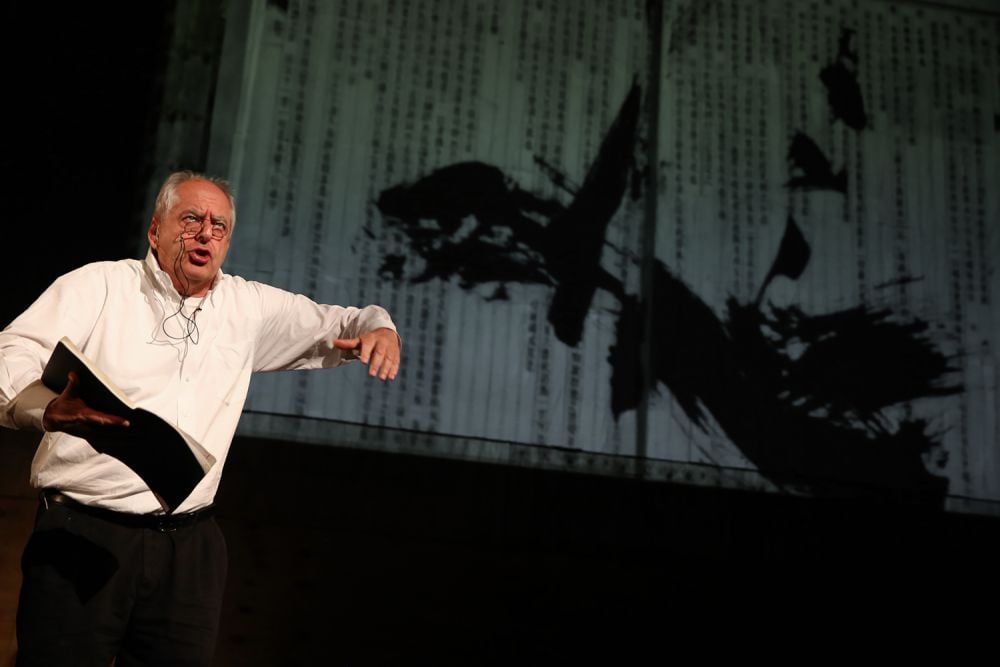
William Kentridge’s Ursonate (2017). A Performa 17 Commission. Photo: © Paula Court.
William Kentridge‘s Ursonate (2017) at the Harlem Parish for Performa 17
I was riveted by William Kentridge’s spirited delivery of Kurt Schwitters‘s incredible abstract poem Ursonate (1932), part of the Performa biennial in November. In the imposing setting of the Harlem Parish, he performed to a sold-out crowd before a slideshow featuring his trademark stop-motion drawings.
Schwitters’s Dada poem upended the classic form of the sonata by infiltrating it with nonsense—the sonata opens with “Fümms bö wö tää zää Uu, pögiff, kwii Ee.” Kentridge, in turn, inserted the appearance of meaning back into the nonsensical by placing it in a new format—he delivered the gobbledygook with all the rhythms and intonations of a lecture, occasionally emerging from behind his lectern to deliver a point with added zest. Just when you thought it couldn’t get any better, he was joined by a soprano along with a French horn and percussionist (Ariadne Greif, Michael Atkinson, and Shane Shanahan), who sent the proceedings into pure ecstasy.
—Brian Boucher
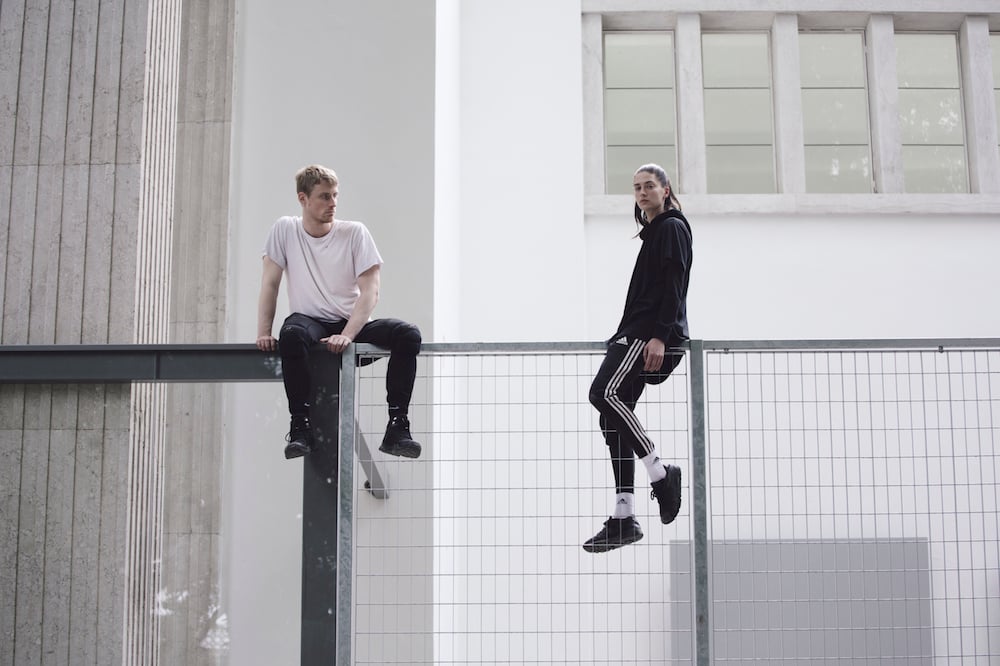
Billy Bultheel and Franziska Aigner in Anne Imhof’s Faust (2017) at the German Pavilion of the 57th Venice Biennale. Photo © Nadine Fraczkowski, courtesy of the German Pavilion and the artist.
Anne Imhof‘s Faust at the Venice Biennale
I visited the Venice Biennale with my mom, the same woman who told me I had “a lot of explaining to do” after we toured the 2014 Whitney Biennial. I figured Faust—Anne Imhof’s Golden Lion-winning German Pavilion—would be a similarly uphill battle. First, you have to wait in line. Once you get in, it’s hard to tell what’s going on. A small handful of performers inhabit a sterile, spare series of rooms. Slowly and silently, the performers begin to interact: first staring at each other from across the room, then embracing and grappling with one another on the floor.
As the drama unfolded, my mom and I were equally transfixed. After nearly an hour, neither of us wanted to leave. I kept thinking about what Marina Abramović has said about how difficult it is to teach people to become performance artists, because charisma can’t be taught. Without performing herself, however, Imhof managed to choreograph dancers whose every move demanded our attention. She created an environment in which the rules that normally govern human interaction were suspended. After we left, my mom and I both took an enormous exhale—neither of us realized we’d been holding our breath.
—Julia Halperin

Martin Kippenberger Untitled (1992). Photo: courtesy of Skarstedt Gallery, New York.
Martin Kippenberger’s Untitled (1992) at Skarstedt, New York
In the German painter’s “Hand Painted Pictures” show at Skarstedt, Martin Kippenberger turned the medium of classical self-portraiture on its head by depicting himself in an unusually candid, almost grotesque manner, exploring the artist’s preoccupation with self-representation. In Untitled (1992) the artist displays all of his technical acumen, uniting a sketch-like, rough draft style with highly detailed facial elements. Painted during an extended stay in Greece, the work also also features German phrases in Greek lettering.
—Henri Neuendorf
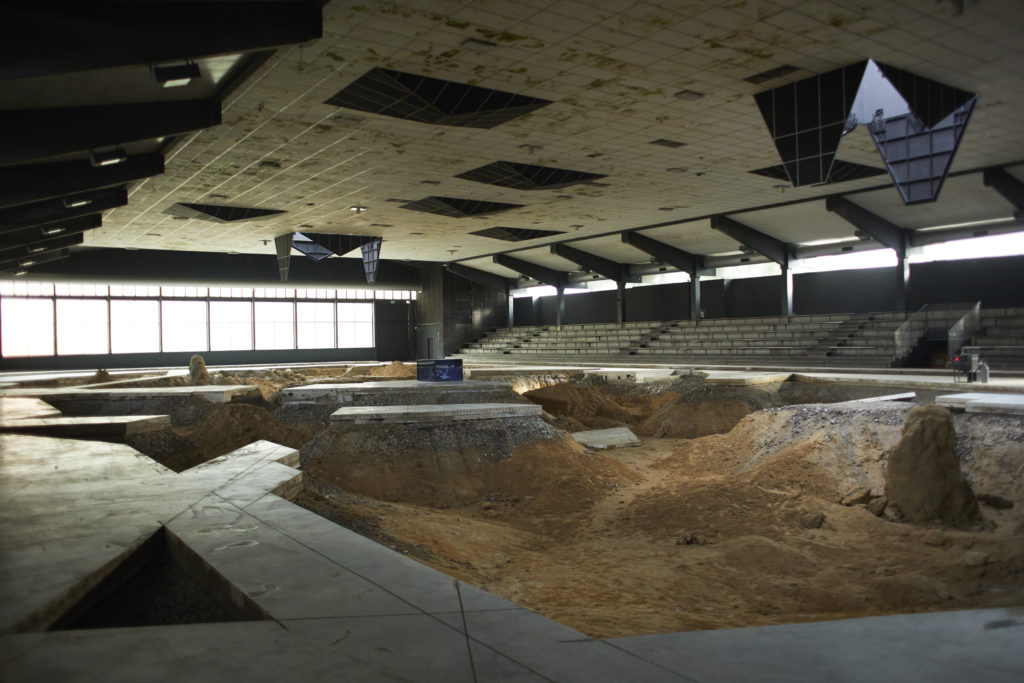
Pierre Huyghe’s After ALife Ahead (2017). Skulptur Projekte. Photo: Ola Rindal.
Pierre Huyghe’s After ALife Ahead (2017) at Skulptur Projekte Münster
Exploring Huyghe’s expansive installation inside a disused ice-skating rink at Skulptur Projekte Münster was one of the year’s most absorbing experiences. I carefully navigated the shattered slabs of concrete on the ground, heading straight toward one of the bewildering chimera peacocks, its dual color schemes running through its median due to a DNA mutation, which was clinging to the dirt-covered windows of the decaying building. (The peacocks were later removed after they started showing signs of stress.) I then descended to the vast space walking between mounds of earth towards a sleek black object. Everything about the space was alive: A pillar of dirt turned out to be a beehive, and the black cube was actually an aquarium made of glass that turned translucent as light came in from a contraption in the ceiling, which opened and closed according to the space’s temperature and humidity. In fact, everything about the hall was controlled to produce specific climate conditions that reflected the rate at which human cancer cells—the historically and medically problematic HeLa cells—divide and multiply. The work felt darkly gripping, with nature’s mutations and anomalies giving the illusion of a controlled environment.
—Hili Perlson

Sue Williams, Horizon Line (2017) at 303 Gallery, New York. Photo by Rachel Corbett.
Sue Williams at 303 Gallery
These paintings stand out to me as something memorably beautiful in an ugly year. Williams’s early works dealing with the violent ravages of misogyny have given way in recent years to lyrical narrative abstractions, packed with neon drama and darkly funny details (curtains opening onto a penis, a girl vomiting) that deliver the right dose of hard political reality, engrossing action, and an exquisite understanding of space.
—Rachel Corbett
Follow artnet News on Facebook:
Want to stay ahead of the art world? Subscribe to our newsletter to get the breaking news, eye-opening interviews, and incisive critical takes that drive the conversation forward.
SHARE


No comments:
Post a Comment